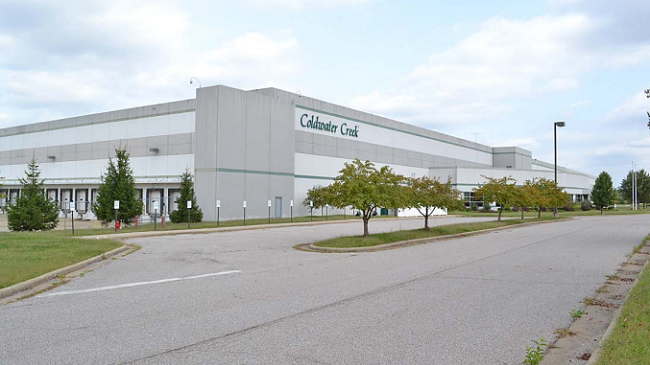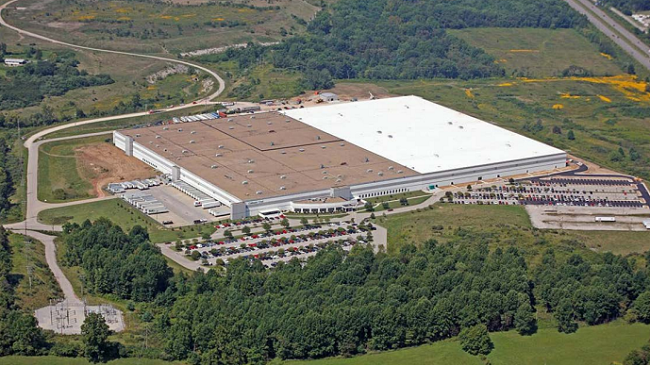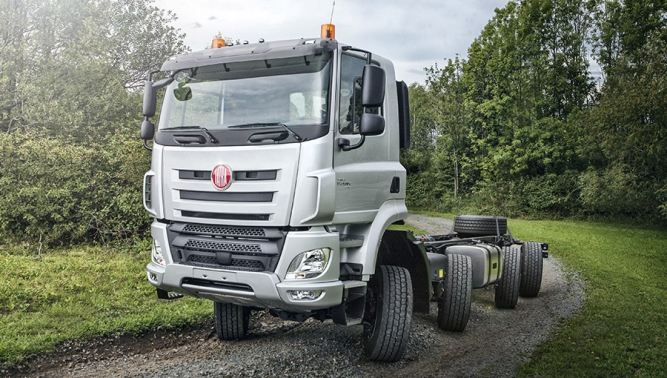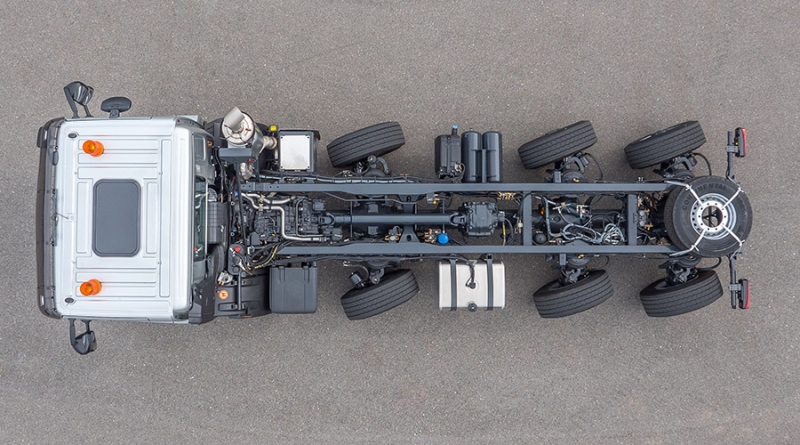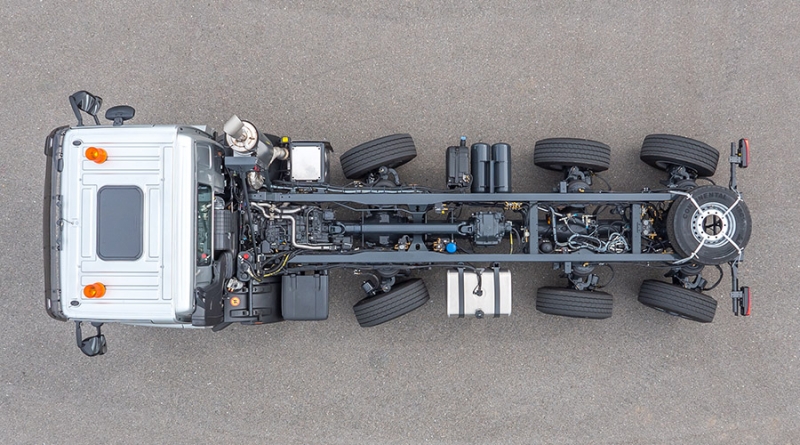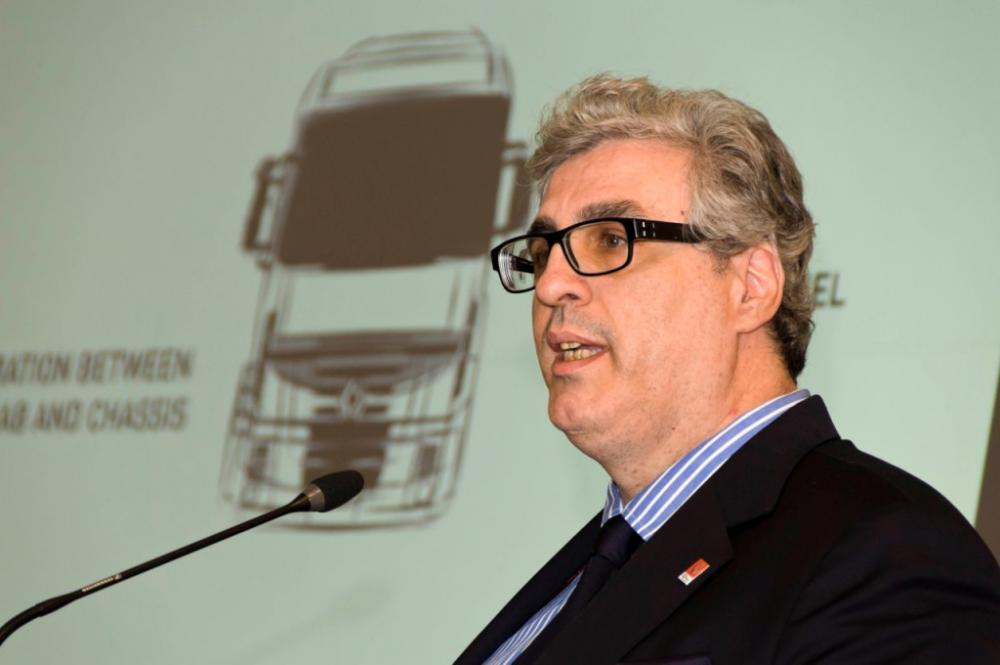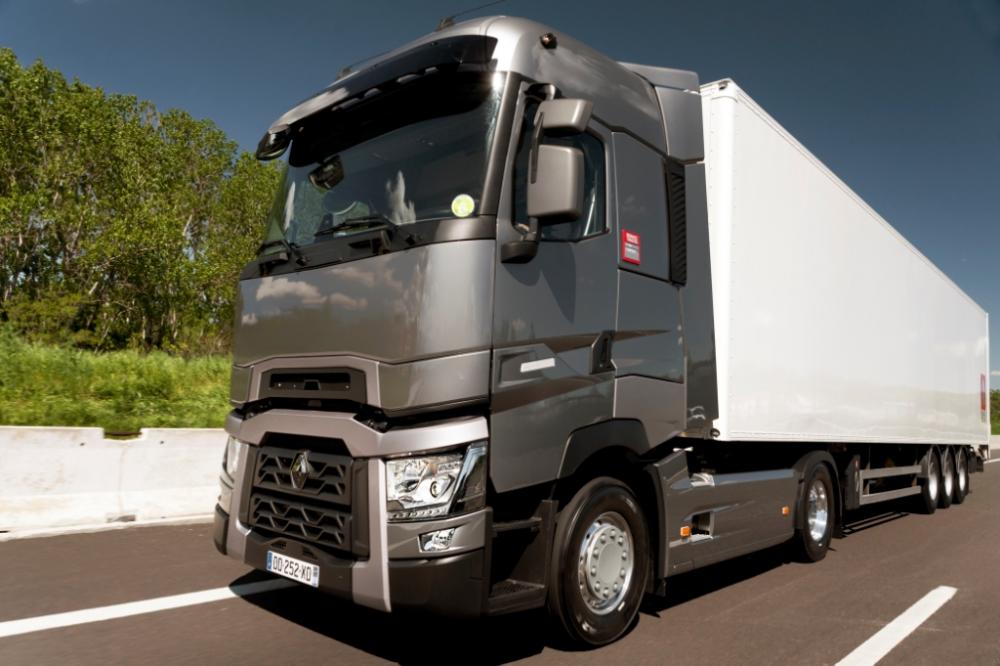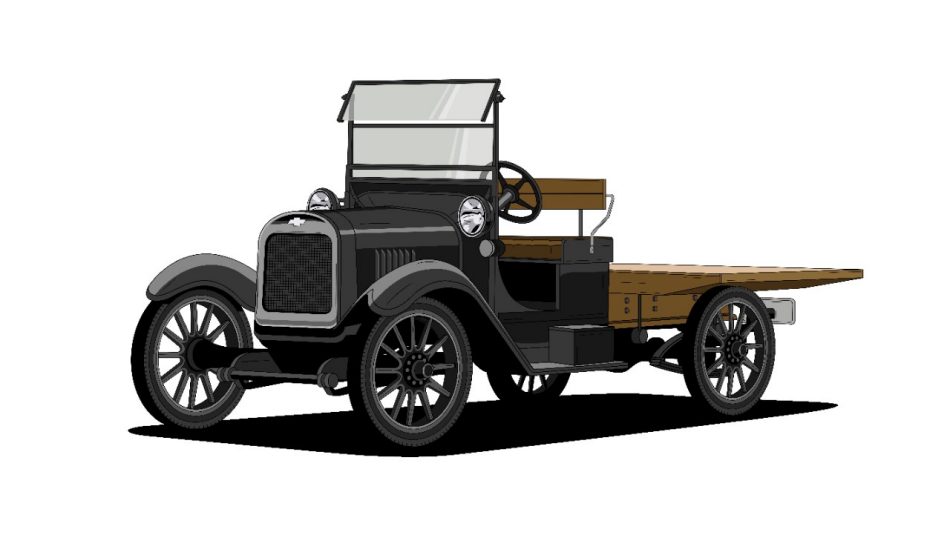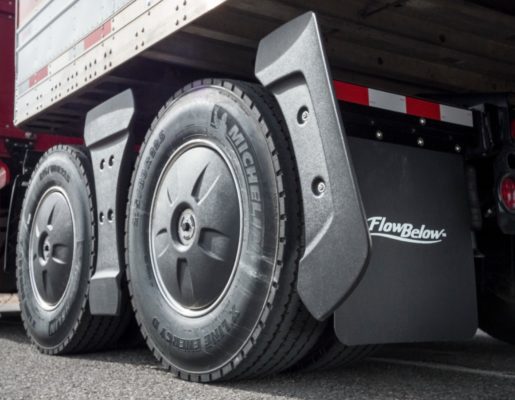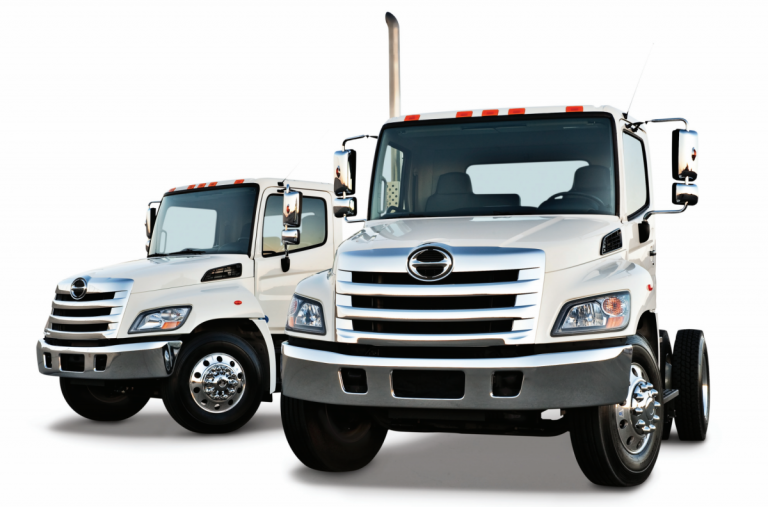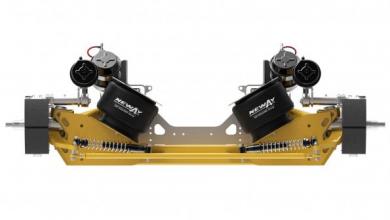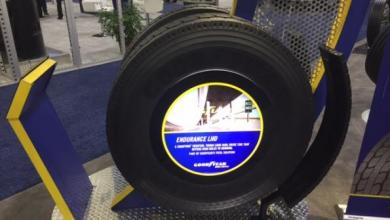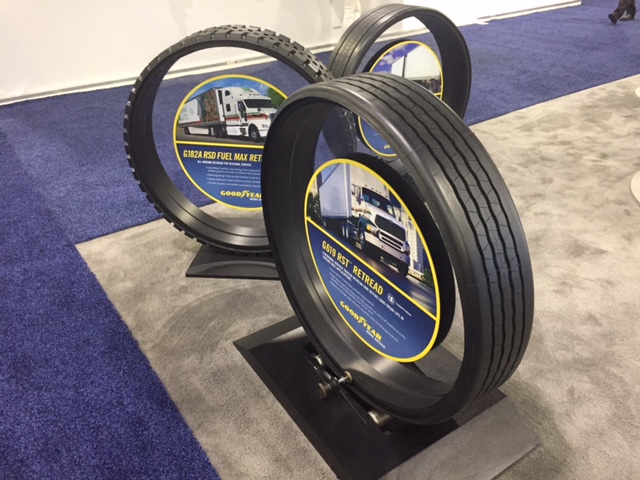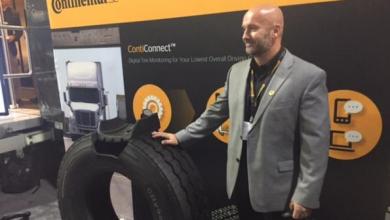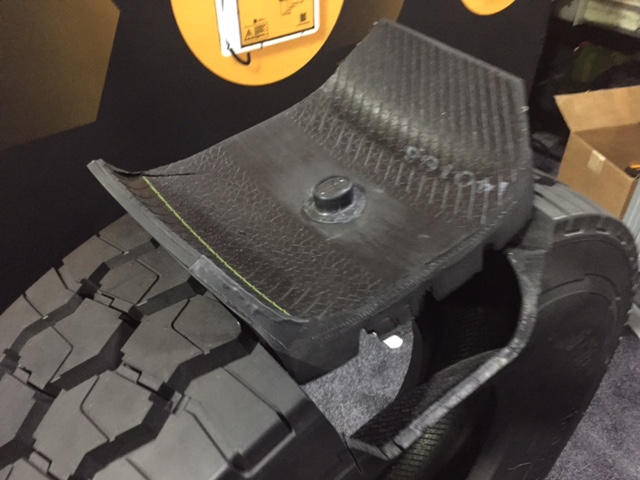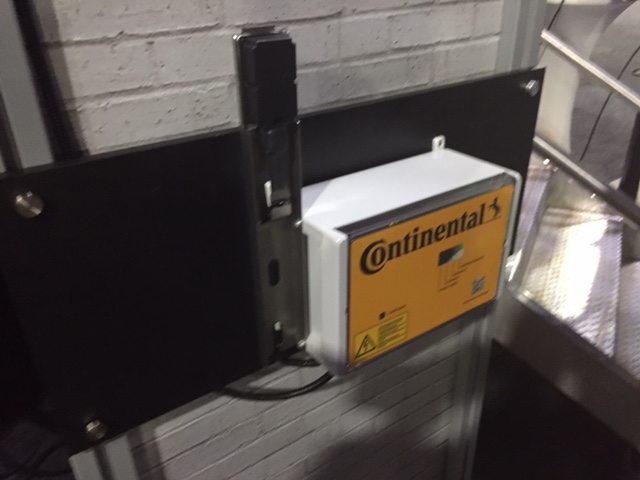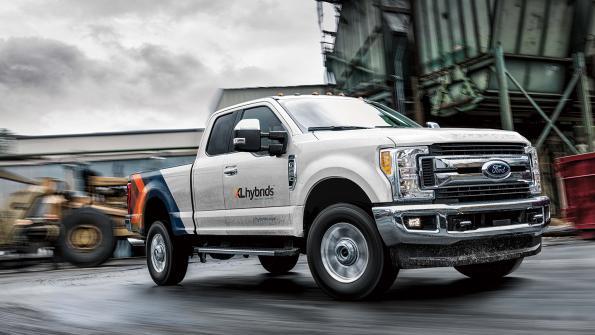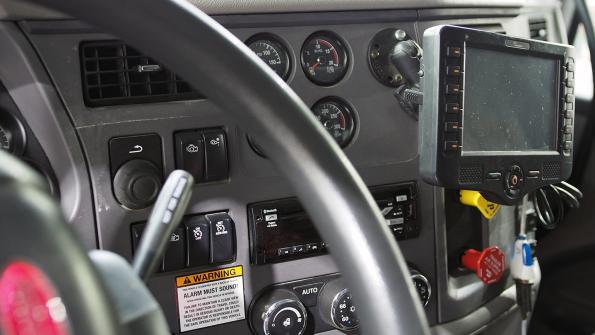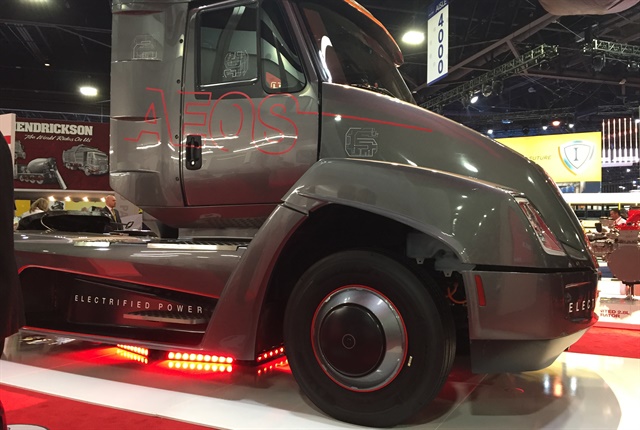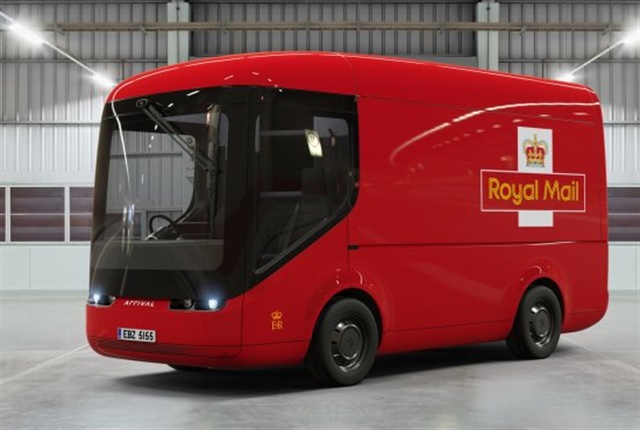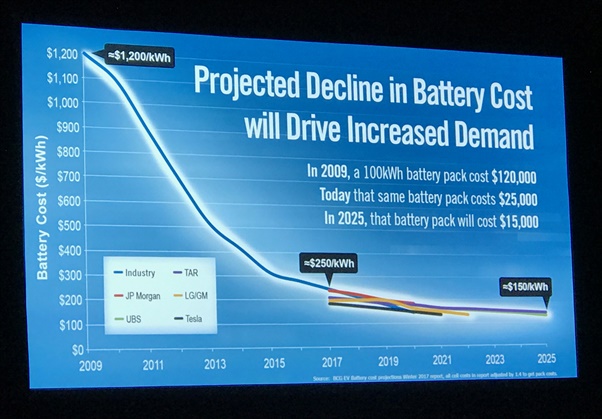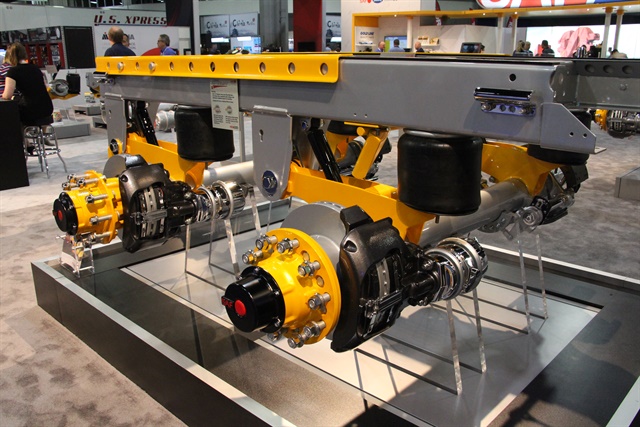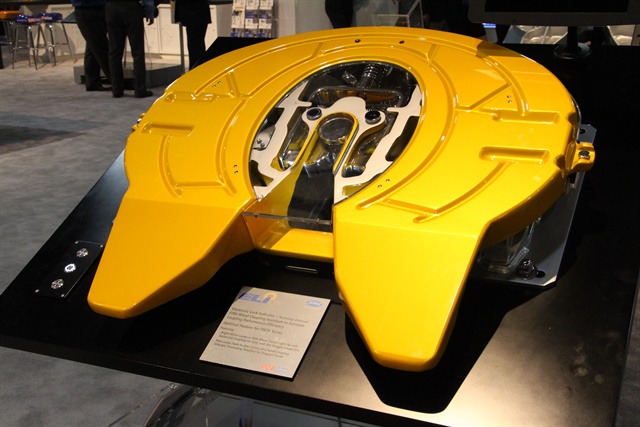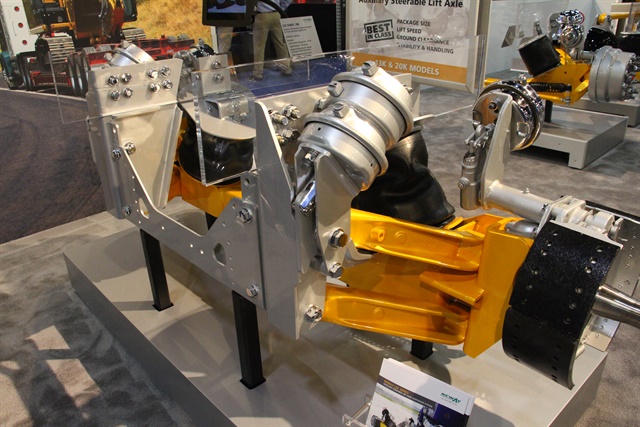
kscarbel2
Moderator-
Posts
18,886 -
Joined
-
Days Won
114
Content Type
Profiles
Forums
Gallery
Events
Blogs
BMT Wiki
Collections
Store
Everything posted by kscarbel2
-
Hino to launch heavy trucks in North America
kscarbel2 replied to kscarbel2's topic in Trucking News
Hino Motors Announces $100-mil Investment, 250 New Jobs TriState Update WOWK / September 27, 2017 Millions of dollars invested and hundreds of new jobs are coming to Wood County as Hino Motors will take over the nearly 1,000,000 square-foot Coldwater Creek Site and convert it to a truck production plant. Hino Motors has called Williamstown home for 10 years, but production has increased 500 percent. The company has outgrown it's current facility, so Hino is relocating to a bigger and better site,adding several hundred employees to the growing company. Senior Vice President at Hino Motors, Steve Stalnaker, says, "In the 10 years that Hino has been in business here, team members again and again have demonstrated they've risen to the challenge of producing world class trucks." Hino officials say it was an easy decision to pick the old Coldwater site, it is just a few miles from the current Williamstown plant. "What was really important to us to be able to maintain our team members. So the fact that we're just about 20 minutes away from Williamstown, is a huge bonus for us, that we can potentially move all our team members to a new facility," said Executive Vice President at Hino Motors, Davey Jung. Hino will take over the 60 acres Coldwater Creek sits on, 20 acres to the side, and 35 acres in the back to combine and streamline operations. The company will bring over its 300 Williamstown employees, and add 250 additional jobs. West Virginia Commerce Secretary Woody Thrasher said, "I think things like this and the Toyota announcement that happened yesterday speak volumes about the quality of workforce that we have, the training, the commitment, and the real craftsmanship that's needed in the automotive industry. We still raise and train significant craftspeople in the state of West Virginia." Hino is also working to purchase more raw materials locally.. supporting the mountain state economy. "We currently have a lot of parts still coming from Japan, and so we're making a lot of effort to localize these parts. And with this effort we're hoping we can add some West Virginia manufacturers to our supply base," said Jung Hino says it still hasn't made a decision as to what will happen to the current Williamstown facility. The company hopes to have the mineral wells truck assembly plant up and running by early 2019. . -
Czech truckmaker Tatra has introduced a new configuration that could be described as an 8x8x8. The four-axle truck not only has four driven axles, but they are all steerable as well. The truck was specially engineered for a Swiss customer that will equip it with a heavy crane. With all wheels steering in all directions, the truck can reach even the narrowest places for special jobs. .
-
Volvo introduces new Mack “Anthem” on-highway tractor
kscarbel2 replied to kscarbel2's topic in Trucking News
The Mack brand “Anthem” was designed by Renault Trucks’ Design Director Hervé Bertrand, who designed the Renault Range T. . -
DTNA Family at North American Commercial Vehicle Show
kscarbel2 replied to kscarbel2's topic in Trucking News
. . -
Chevy Celebrates 100 Years of Iconic Truck Design General Motors Press Release / September 28, 2017 DALLAS — One hundred years ago, Chevrolet introduced the 1918 One-Ton, setting the stage for a century of iconic trucks. To commemorate this milestone, the brand is looking back on 10 of the most iconic designs in Chevy truck history. While Chevrolet truck design has changed radically over the past 100 years, one thing has always been true: Form has followed function as the trucks evolved to meet the customers’ changing needs. “Today, the Chevrolet truck design studio is focused on purposeful design that creates personality and customization options for a wide breadth of truck customers,” said Rich Scheer, director of Exterior Design for Chevy Trucks. “Looking back on the past century of truck design, I realized that Chevrolet designers have been focused on the same goals since the very beginning.” Here are 10 of the most iconic Chevy trucks in the past 100 years, along with a design perspective for each from Scheer: 1918 One-Ton: The first production truck from Chevrolet was inspired by vehicles used in plants to move parts and pieces from place to place. In the simplest terms, this is an example of form follows function. It was a rolling chassis featuring an open cab, an inline four-cylinder engine and an open frame allowing customers to install the body that fit their unique needs. One striking design element is the beautiful badge, which was clearly a designed element of this truck. The font, the proportions and the dark blue, almost black color make a very sophisticated bowtie, even by today’s standards. 1929 International Series LD: The 1929 was the first Chevrolet truck to feature a closed cab, which created the potential for what we know as interior design today. As with all designs, once the functional elements were defined, more comfort- and style-focused features started to become important for truck buyers. It’s amazing how fast they went from the purpose-built 1918 truck to a more styled, closed-cab truck. This is also the time when we started to introduce color. The color combinations on Chevrolet cars and trucks from this period are something I still love today. 1938 Half-Ton: This was the first truck designed in the newly formed Art and Colour department, which was later to be known as Design Center, by Harley Earl and his team. (Earl became GM’s first design chief.) This year also saw the designs of cars and trucks deviate, as Design realized the need for trucks to have their own identity. As such, it is arguably the first example of Design’s influence on trucks. The proportions really evolved from the earlier designs, creating a lower and longer truck with a styled grille and elegant, swept fenders. 1947 3100 Series: This is one of the most iconic designs in automotive history. If you mention a vintage Chevy truck, I think almost everyone will picture this model in their mind. It was such a departure, advertisers coined the phrase “Advance Design,” because it was bigger, stronger and sleeker than ever before. The five-bar horizontal grille is a departure from vertical grilles of the past and was the very beginning of what became a signature of Chevrolet truck design. You can see that the fenders are more integrated and the lamps are on the wide part of the vehicle instead of inboard, giving it a wider, stronger presence. The result is very handsome design with great proportions. 1955 3124 Series Cameo Carrier: Known as the Task Force truck, the Cameo Carrier is Chevy’s first Fleetside design. The bed surface is flush with the cab and fender, making for one complete, elegant shape from front to back. It was also Chevrolet’s first bumper-to-bumper styled truck, as styling didn’t stop at the back of the cab. During this time, styling became a selling point for cars, inspiring more focus on design for trucks as well. This was definitely the heyday of American automotive styling and ornamentation. 1967 C10 Fleetside: This is the first truck that I really fell in love with. It’s a beautiful, sleek design with a hint of wheel flare. I also really appreciate the line that flows away from the top of the bed line and the beautiful balance with the front of the vehicle. This is a feature that can easily go wrong, but the designers of the time did it so right. The body side has a strong shoulder that tapers toward the rear. The Chevrolet bar on the front fascia connects the headlamp center with the bowtie — a design element that is still consistent today. This time period is also when metallic paint was introduced, which highlighted the subtleties and body lines that weren’t as obvious before. 1973 C30 One-Ton Dually: This third-generation C/K square-body truck was the first crew cab dually to market, and many consider it to be the first modern Heavy Duty Truck. The design reflects a dramatic increase in capability for customers who used their trucks for both work and recreation. It is simple, tough and purposeful, similar to the earliest Chevrolet trucks. 1988 C/K1500: The C/K1500 was the first truck design influenced by aerodynamics. This generation had great design reach, meaning it looked very advanced for its time. That is especially true for the new interior design, with a low instrument panel, pod-like setup and even buttons that looked futuristic. This truck still looks modern and sophisticated 40 years later. 1999 Silverado 1500 LT Z71: This was the first generation that used the Silverado nameplate. It also introduced many of the modern design elements that customers associate with current Chevy truck design, especially the iconic Chevrolet front end. 2007 Silverado 1500: The 2007 Silverado is simple, modern and powerful, featuring exaggerated wheel flares and a clean body side. It’s another evolution for Chevrolet trucks in creating their own identity on the road, with distinctive front and rear ends. This truck brought back the “tough truck” look and feel, even though it was still heavily influenced by aerodynamics. .
-
Chevrolet’s New Medium-Duty Trucks to be Named Silverado General Motors Press Release / September 28, 2017 DALLAS — Today at the State Fair of Texas, Chevrolet confirmed that its all-new Class 4 and 5 trucks launching in late 2018 will be branded Silverado. The announcement came during Chevrolet’s Truck Centennial event, which kicked off a 100-day celebration of the first century of Chevrolet pickups. “The first Chevy truck was built in 1918 for small business owners, and we have been expanding the market ever since because customers want specialized trucks that can tow and haul with confidence,” said Sandor Piszar, director of Marketing and Advertising for Chevrolet Trucks. In the last three years alone, Chevrolet has revitalized the midsize pickup segment with the Colorado, launched a new range of Low Cab Forward trucks and introduced a completely redesigned 6.6-liter Duramax diesel for heavy-duty pickups. John Schwegman, U.S. director of Commercial Product, said Chevrolet’s growth in the commercial market has moved in lockstep with the expansion of the brand’s truck portfolio. Commercial volume is up by 48 percent since 2013 and domestic segment share has grown year-over-year for the past 13 consecutive months. “We are earning new business because we have more solutions to help businesses grow,” Schwegman said. “The Silverado 4500 and 5500 will stand out because we’ve designed the trucks around how customers work. They will be powerful, highly maneuverable and among the easiest trucks on the market to upfit with specialized bodies, such as dump bodies, rollbacks, freight boxes and more.” Both the Silverado 4500 and 5500 will be available in Regular and Crew Cab models, with 4x2 and 4x4 capability and a wide range of GVWRs and wheelbases. Chevrolet will also offer these trucks with optional OnStar with 4G LTE connectivity provided by AT&T, which fleet management companies are embracing to help improve safety and productivity. All Silverado 4500 and 5500 models will be powered by a Duramax diesel engine and Allison transmission, a legendary combination that has powered about two million trucks. Allison Transmission, based in Indianapolis, is the largest designer, developer, manufacturer and distributor of medium- and heavy-duty fully automatic transmissions. Their designs have been used in a variety of applications, including construction, fire, distribution, bus, motorhomes, defense, energy and refuse. They have helped drive Chevrolet’s hardest-working trucks since the 1950s. The first Duramax diesel engines were introduced in Chevrolet and GMC trucks in 2001, and since then have accumulated more than 100 billion miles of real-world experience. Full technical specifications for the new Silverado 4500/5500 will be released close to launch. .
-
Ryder, Aperia team up Truck News / September 28, 2017 ATLANTA, Ga. – After recently logging more than a billion miles on their flagship product, the Halo Inflation System, Aperia Technologies announced they will be partnering with Ryder System to bring the product to their fleet of commercial rental vehicles. Co-founder of the seven-year old company, Josh Carter, along with chief technology and procurement officer for Ryder, Scott Perry were on-hand at the North American Commercial Vehicle Show to announce that the Halo will be the exclusive automatic tire inflator on Ryder rental vehicles, as well as being offered to Ryder’s leasing and select care customers. Headquartered in Burlingame, California, with just 59 employees, Carter says Aperia is excited about the partnership, and will be expanding, hiring more employees and opening a new facility to help scale up for the new venture with the $6.8 billion commercial fleet management company, and its other growing business. The Halo attaches to each wheel and automatically gauges tire pressure, providing air as needed to keep inflation optimal. Aperia says keeping tire pressure within the optimal range increases fuel-efficiency by up to 2%, improves safety, extends tire life, and maximizes time on the road. Carter says other inflation solutions only focus on trailers, which solves only half the problem. Halo works on both tractors and trailers, although to start Ryder will be placing the product primarily on drive axle wheels on tractors. Perry said the partnership would have a significant impact on Ryder’s business, helping to correct for tire failures that are a key driver of cost for their customers, as well as a key factor in downtime. “That’s really the beauty of this product… it’s as close to zero maintenance as you get,” he said. The product has already been deployed on hundreds of Ryder’s vehicles and will be added to more as the fleet is expanded or vehicles are replaced. Going forward, leasing and select care customers will also be offered packages which include the solution. Financial details of the partnership are not being released by either company.
-
Suppliers See Intelligent Trailers Gaining Prominence
kscarbel2 replied to kscarbel2's topic in Trucking News
Utility hosts trailer telematics panel Truck News / September 28, 2017 ATLANTA, Ga. – The power of telematics continues to advance, and there are still plenty of opportunities to be realized – especially when it comes to the rolling assets seen in a rearview mirror. It’s why Utility Trailer’s Intelligent Trailer Symposium, held during the North American Commercial Vehicle Show, gathered a panel of high-profile executives to explore the promises and challenges of collecting, sharing, and using trailer-related data. “We do spend a lot of time talking about trucks,” said Jon Morrison, Wabco’s president – Americas. “The trailer is very much increasing in importance.” The interest in data clearly involves more than filling spreadsheets and completing reports. Wabco has a boat tail that deploys and retracts at specific speeds based on data from existing Antilock Braking Systems. Retreading programs can track the condition of individual tires equipped with RFID tags. Reefer settings can be monitored and changed remotely. Those are just a few examples. “The demand for data is increasing everywhere,” said Berend Bracht, president and Chief Executive Officer of Bendix. While the traditional focus has been on collecting the data because of an exception or unusual situation, like a fault code or collision, the possibilities that can be realized by analyzing “big data” will require a continuous stream of bits and bytes. More data can be a good thing, but it presents new challenges to address. Will information collected about a trailer, for example, come from wired or wireless sensors? How will it ultimately be packaged and transmitted to drivers and operation teams? “There’s a lot of data, but who gets that data?” Bracht asked, referring to one fundamental question. “One of the biggest issues that still exists for fleets is light outage(s),” explained Dominic Grote, president and Chief Executive Officer of Grote Industries. Drivers need to be notified if lights go dark, but so do maintenance teams. And there is plenty of underlying information to track. The largest entry in the U.S. Federal Register is Federal Motor Vehicle Safety Standard 108, he observed. That document dictates the many standards lights have to meet. When establishing telematics systems, there is also the question of how quickly people need to receive information, said David Kiefer, director of sales, marketing and product management for Carrier Transicold. One warning might require a driver’s immediate attention, but if reefer temperatures begin to fluctuate it might be better to inform other fleet personnel who have the tools to make adjustments remotely. Drivers no longer have to be part of that equation. Too much data, after all, can be overwhelming to those sitting behind the wheel. “We have to think in terms of what we do to enable the driver just to drive the truck,” he said. -
New Wash-Bots to Enhance Cleaning Experience
kscarbel2 replied to kscarbel2's topic in Trucking News
Bitimec reveals new battery-powered Wash Bot at NACV show Truck News / September 28, 2017 ATLANTA, Ga. — Bitimec revealed its all-new battery-powered Wash Bot at the North American Commercial Vehicle (NACV) show this week. The new Wash Bot relies solely on battery power and operates like a portable car wash, but for your truck and trailer. The new washing machine unit, called the Wash Bot 626 EZ, is quite large is allows an operator to move the unit around the trailer effortlessly and soap and water are applied with the push of a button. “It can wash a full 53-ft trailer in just 6-8 minutes,” Bruno Albanesi, president of Bitimec said. “One operator can wash 30 trailers in a single charge on an 8-hour shift.” The bristles on the giant spinning washing brush are the secret to the gentle, yet effective cleaning solution, Albanesi said. “The secret is in the friction,” he said. “It works to take off dirt, but won’t scratch or ruin a trailer fancy paint job.” Currently, the company is used by fleets, UPS, and various coach bus companies who trust the Bitimec technology to wash and rinse their vehicles. You can learn more about the wash bots at www.wash-bots.com -
Eberspaecher introduces next generation 1Box aftertreatment system
kscarbel2 replied to kscarbel2's topic in Trucking News
Eberspaecher shows off emissions control systems Truck News / September 28, 2017 ATLANTA, Ga. – Eberspaecher, best known for its climate control systems, brought its line of exhaust aftertreatment systems to the North American Commercial Vehicle show. Jack Riddle, director, advanced product engineering, said Eberspaecher supplies emissions control systems to OEMs including Mack, Volvo, and Daimler – both in North America and abroad. Advances in their design have made the systems more compact, and now confined to a single canister. “We are one of the largest suppliers of diesel aftertreatment systems to OEMs,” Riddle explained. The one box system houses the diesel oxidation converter, a diesel particulate filter, and the selective catalytic reduction (SCR) system. The systems remove harmful particulate matter and NOx from the exhaust before it’s released into the air and is how truck manufacturers comply with stringent emissions requirements. To properly maintain the system, Riddle suggested following the OEM guidelines for scheduled maintenance. A trend he seems emerging in the future is for fabricated manifolds in commercial vehicles, which can improve the performance of the catalyst. -
FlowBelow Adds Quick-Release Option for Fairings
kscarbel2 replied to kscarbel2's topic in Trucking News
FlowBelow makes its AeroKit driver-friendly Truck News / September 28, 2017 ATLANTA, Ga. – FlowBelow announced it has enhanced its flagship fuel-saving Tractor AeroKit system by adding a new “quick-release” fairing option. The new easy-to-use AeroKit was introduced and on display at the inaugural North American Commercial Vehicle (NACV) show that took place in Atlanta this week. The new quick-release mounting system allows the driver of the truck to remove the fairings easily in seconds and without tools. The older model used traditional bolts, which would take the driver several minutes to remove and would require the use of tools. Now, said Josh Butler, the CEO and Founder of FlowBelow, all drivers or operators have to do is turn the new fasteners and the fairing will release in just seconds. “In just 3-4 seconds, you can now get full access between the wheels,” Butler said. “This is especially significant for drivers because they’re not trained mechanics, they shouldn’t have to go find a tool to remove this product. So we’ve made it really easy for them. They already have a difficult job so we wanted to make the product as simple as possible for them.” According to Butler, the AeroKit maximizes the aerodynamic performance of a fleet’s wheel covers by also controlling the airflow between the wheels and behind the wheels. Based on SAE fuel economy testing, the fairings have demonstrated a significant fuel savings of 2.23% in combination with wheel covers, which is over three times the fuel savings of wheel covers alone. “With the exception of the Freightliner Cascadia with Aero package, which comes standard with our wheel covers, over 80% of our customers utilize the complete AeroKit as opposed to wheel covers alone,” Butler said. “Most fleets cannot even measure the fuel savings of wheel covers by themselves. By enhancing our AeroKit with quick-release fairings we are targeting customers that desperately want achieve the maximum fuel savings possible without creating extra work for their mechanics and drivers.” The quick release fairing option is available today and can be retrofitted, Butler added. . -
Hino to launch heavy trucks in North America
kscarbel2 replied to kscarbel2's topic in Trucking News
Hino's heavy Class 8 is the 12.9-litre equipped 700 Series. However this Class 7 / Class 8 will be based on the heavier end of the mid-range Hino 500 Series. http://www.hino.com.au/500/ -
Hino to launch heavy trucks in North America
kscarbel2 replied to kscarbel2's topic in Trucking News
Hino building $100M W.Va. plant to assemble its new class 7 & 8 trucks Tom Quimby, Commercial Carrier Journal (CCJ) / September 28, 2017 A Class 8 Hino truck? Yes, that and a new Class 7 truck will be produced starting in 2019 at a new assembly plant that the company will be building in Mineral Wells, West Virginia, close to its current plant which recently celebrated a 10-year anniversary. Hino Motors Manufacturing U.S.A. President Takashi Ono made the announcement Wednesday at a press conference where local government officials and residents applauded the truck maker’s $100 million plant investment which is expected to add 250 jobs. “The new plant, which is four times the size of our current plant, will allow us to combine several assembly operations under one roof which will provide significant efficiency gains,” Ono said. “In addition to producing our current winning line-up of trucks, we will start the production of new Class 7 and Class 8 trucks in 2019,” Ono continued. Those new trucks, which will be powered by Hino’s 300-360 h.p. A09, 9-liter engine, will debut at the NTEA Work Truck Show next year. Hino’s new plant will be housed in the former Cold Water Creek distribution center. Besides truck production, the plant will also house cab assembly, an operation currently conducted in Japan. Though a family emergency prevented West Virginia Governor Jim Justice from attending the press conference, a representative read his prepared statement. “West Virginia has enjoyed a very good relationship with Hino. This new plant demonstrates that Hino has confidence in our state, and West Virginia is a great place to do business,” Justice wrote. “On behalf of everyone in the Mountain State, I thank Hino for their continued investment and the creation of new jobs.” As part of Hino’s growth plan, Hino broke ground last month on a new state of the art corporate office in Novi, Michigan. Hino is consolidating all operations in its new corporate headquarters, including sales, marketing, service, engineering, purchasing and manufacturing. Hino’s Insight Diagnostic Center, which monitors vehicle performance and uptime for all Hino trucks equipped with Insight, will also operate out of the Novi headquarters. “These are truly exciting times for Hino in the U.S. Our growth and customer acceptance in the Class 4-7 market are enabling us to introduce wider variety of products,” said Yoshinori Noguchi, CEO of Hino North America. . -
FlowBelow Adds Quick-Release Option for Fairings
kscarbel2 replied to kscarbel2's topic in Trucking News
FlowBelow introduces removable fairing Today’s Trucking / September 28, 2017 ATLANTA, GA – Those who regularly chain their tires now have the chance to enjoy FlowBelow's Tractor AeroKit system, thanks to new quick-release fairings between the wheels. Drivers can remove related fasteners in seconds and without tools, compared to the traditional fasteners used on the base model. “In just three to four seconds, you can now get full access between the wheels,” Butler said. “This is especially significant for drivers because they’re not trained mechanics, they shouldn't have to go find a tool to remove this product. So we’ve made it really easy for them." According to Butler, the AeroKit maximizes the aerodynamic performance of the system's wheel covers by also controlling the air flow between and behind the wheels. Based on SAE fuel economy testing, the fairings have demonstrated a significant fuel savings of 2.23% when combined with the with wheel covers. That's triple the fuel savings of wheel covers alone. “With the exception of the Freightliner Cascadia with Aero package, which comes standard with our wheel covers, over 80% of our customers utilize the complete AeroKit as opposed to wheel covers alone,” Butler said. “Most fleets cannot even measure the fuel savings of wheel covers by themselves. By enhancing our AeroKit with quick-release fairings we are targeting customers that desperately want achieve the maximum fuel savings possible without creating extra work for their mechanics and drivers.” The quick release fairing option is available today and can be retrofitted, Butler added. -
SAF-Holland unveils new lift axle, retrofit for lighted fifth wheel
kscarbel2 replied to kscarbel2's topic in Trucking News
. -
SAF-Holland unveils new lift axle, retrofit for lighted fifth wheel
kscarbel2 replied to kscarbel2's topic in Trucking News
SAF-Holland rolls out two new products Fleet Owner / September 28, 2017 Component supplier offers new Neway steerable lift axle model and ELI-te electronic lock indicator retrofit kit for fifth wheels. SAF-Holland unveiled two new offerings at the North American Commercial Vehicle (NACV) show this week; a new large-capacity 20,000-lbs. Neway LSZ auxiliary steerable lift axle suspension system and a new retrofit kit for its automatic fifth wheel lighting system, dubbed the Electronic Lock Indicator or “ELI-te,” introduced nearly two years ago. The new LSZ lift axle offers a more compact size, double the lift speed, improved ride performance, plus easier installation and service, SAF-Holland said. With an 18.3-in. package size, the LSZ’s design is up to 8i-in. shorter than comparable lift axles, allowing it to fit where others cannot, while providing extra frame rail space for additional equipment – potentially allowing for a reduction in a truck’s overall wheelbase, which would help provide extra maneuverability to get in and out of tight spots. The LSZ also uses rolling lobe style air springs to provide for a softer ride as well as a proprietary kingpin design that improves maintenance, for if “knuckle components” wear out, they can easily be replaced by removing a single bolt, the company said. The new retrofit kit for SAF-Holland’s ELI-te automatic fifth wheel lighting system, designed for Holland FW35 Series fifth wheels, features “plug-and-play” technology makes it easier to install. In addition to the Retrofit Kit, it also available as a replacement top plate or as a complete fifth wheel assembly to replace non-Holland branded fifth wheels. For a non-drilled top plate, the kit can be ordered with an optional Drilling Tool Kit, the company said, while for converter dolly applications, the electrical connection is designed to be compatible with ABS status signal. . -
Goodyear: Long-haul fleets desire more tire life most of all Sean Kilcarr, Fleet Owner / September 28, 2017 Survey data helped focus development of new Endurance line Dustin Lancy, marketing manager for the Goodyear’s commercial tire division, said that a proprietary poll of 590 fleets is helping focus the company on the key “must have” attributes of truck tires – and the top one is long miles to removal. “We surveyed long-haul fleets to find out what the top 20 attributes of their truck tires and long miles to removal came out on top, followed by fuel economy and getting more even wear,” he explained to Fleet Owner during the North American Commercial Vehicle (NACV) show this week. Thus that demand for “long life” became the development focus of the company’s new Endurance line of truck tires – with Goodyear unveiling the most recent addition to that line, the Endurance LHD tire, short for “long haul drive,” at NACV. “It’s about getting not just longer life with the initial tread but also as a retread,” Lacy explained, noting that Goodyear is now halfway through the introduction of its Endurance line: three of the line’s six tires – the new Endurance LHD, Endurance WHA (for waste haul applications) and Endurance RSA (a regional long-haul model) – are now available to trucking companies. By January 2018, he expects the full six-model Endurance line will be available. Several key design features help the Endurance LHD both attain more mileage and save fuel as well, Goodyear noted: A new cap-base and tread combination to help achieve longer miles to removal as well as lower rolling resistance. A new sidewall compound to help lower rolling resistance and promote fuel efficiency. A steel belt package to help provide enhanced casing toughness A “shoulder wedge,” which was developed to help stabilize the tire’s belt package while improving its longevity. Goodyear’s proprietary “Tredlock Technology” helps stabilize the tire’s tread area, increasing resistance to irregular wear and thus boosting longevity. The “zig zag” pattern of Goodyear’s Treadlock pattern in the tire tread blocks runs both vertical and parallel to the tire’s surface, the company added, which helps lead to more uniform wear, a better ride, and less vibration. The Endurance LHD is currently available in size 295/75R22.5 (Load Range G) and 11R22.5 (Load Ranges G and H). Another size, 11R24.5 (Load Range G), will become available in December. Sizes 11R24.5 (Load Range H) and 285/75R24.5 (Load Range G) will be available in January 2018. Goodyear also currently plans to introduce a matching retread for the Endurance LHD by the summer of 2018, Lacy noted, using the company’s “spliceless” UniCircle retreading system, which he said helps retreads better match the shape of specific Goodyear tire casings. The next big tire challenge in the trucking space, however, is going to focus on developing more what he called “hybrid” tires – models capable of operating in both long-haul and regional/urban environments. “A ‘catch all’ tire is the holy grail,” he explained. “We’re aiming to try and fill that gap for fleets in both long-haul and regional operations with a ‘super regional’ type of tire. The larger fleets are asking for that.” .
-
Continental unveils digital tire monitoring platform Fleet Owner / September 28, 2017 Ability to remotely track tire pressures via the internet viewed as a cost and time saver for fleets Tires are a major pain point for motor carriers, representing one of their top three operating costs, right after driver wages/benefits and fuel. They can also represent a major safety issues as well: out of the 40,944 Level I inspections conducted on commercial vehicles during the annual 72-hour Roadcheck International roadside inspection blitz this year, 9,398 of them were placed out of service, with 15.1% of those violations directly related to tire and wheel problems. Maintaining proper tire pressure is not only critical to avoiding tire-related safety problems but also key to ensuring fleets obtain the maximum mileage and fuel economy benefits from them as well. To address those issues and more, Continental is introducing a digital tire monitoring platform dubbed “ContiConnect” that will allow fleets to remotely track and manage truck and trailer tire air pressure via sensors installed within the tires themselves. During a press conference at the recent North American Commercial Vehicle (NACV) show, Continental explained that tire data is collected via a round battery-powered sensor glued on the inner liner of the tire. As trucks enter a fleet’s yard, a “reader station” then picks up data from the sensors and transmits it to the ContiConnect web portal via a cellular network. Via that portal, fleet managers and other maintenance personnel can track low pressure alerts, high tire temperatures, as well as track data over time, Continental said. The supplier said those sensors can be factory-installed on new tires or retrofitted to existing ones. They are mounted within the liner to more accurately detect the tire temperature and pressure without being influenced by heat from braking systems, Continental added. The platform also features customizable text and email notifications so fleet personnel can receive immediate alerts when low tire pressures or high tire temperatures are detected, the supplier added; allowing fleets to act proactively to fix issues rather than spending valuable time performing manual pressure checks. Continental’s engineers said the battery powering the tire sensor can last up to six years, allowing the sensor to be “re-used” as tires are replaced or transferred within a fleet. It can also help deter theft as tire location can be tracked via the sensors, they noted. The company added that the “reader station,” which collects and transmits the tire sensor data, needs to be within 65 ft. of a truck or trailer to accurately collect that information. Usually, the best spot is near a refueling island, Continental’s experts said. The supplier also envisions using the reader/cellular network part of the ContiConnect system as a “base” upon which to expand fleet data collection and analytical services. The tire pressure monitoring system offers data integration with multiple telematics providers, including Zonar, which is majority-owned by Continental, and independent third party PeopleNet, the company noted. Such “integration” allows tire data to be seen in both the providers’ in-cab displays and back-end portals, Continental pointed out. .
-
XL Hybrids introduces hybrid electric upfit for Ford F-250
kscarbel2 replied to kscarbel2's topic in Trucking News
-
XL Hybrids introduces hybrid electric upfit for Ford F-250
kscarbel2 posted a topic in Trucking News
Fleet Owner / September 27, 2017 Fleets can order Ford F-250s with XL3 hybrid electric 'ship-thru' upfit option starting with model year 2018 trucks through Ford's eQVM program. XL Hybrids, Inc., a provider of electrification solutions for commercial and municipal fleets, announced that it will begin production on the XL3 Hybrid Electric Drive System for model year 2018 Ford Super Duty F-250 pickups in the first quarter of 2018. This will be the first time that Ford F-250 trucks can be ordered by fleet customers with hybrid-electric drive technology, according to the company. The XL3 system will be offered as a "ship-thru" upfit on model year 2018 F-250 pickups. Orders are being taken now for Q1 2018 installation. The XL3 system will be available on the Ford Super Duty 6.2L V8 gasoline engine with a range of wheelbases, cab and bed configurations in both 4x2 and 4x4 options. All components for the XL3 installation are located under the vehicle, leaving the pickup bed's capacity unaffected, XL Hybrids noted. The company also said the XL3 upfit will provide up to a 25% increase in mpg and accompanying reductions in CO2 emissions on these trucks used for rugged towing, hauling and utility applications. The decision to launch XL3 technology for Ford F-250 trucks was based on demand from fleet customers who are seeking higher fuel efficiency from Ford's 3/4-ton work trucks. "Ford Super Duty vehicles are in demand by XL Hybrids' fleet customers, so we have developed our hybrid-electric upfit solution for the F-250 pickup to meet our customers' need for power and payload as well as better fuel economy," said Ed Lovelace, chief technology officer for XL Hybrids. "We recently surpassed a landmark 50 million total combined customer road miles," he added, "and our experience in successfully supporting leading fleets informs our product roadmap." Installation of the XL3 system "can be completed in just hours" on F-250 pickup trucks as a ship-thru upfit, according to XL Hybrids. The system leaves the engine, transmission, fuel system and exhaust system "completely intact." Fleets maintain the complete OEM warranty on their F-250s and get a three-year, 75,000-mile warranty from XL Hybrids on the XL3 powertrain. Further, the XL3 system "requires no special maintenance, charging infrastructure or driver training," XL Hybrids said. XL Hybrids is a qualified participant as both a technology provider and an installer in Ford's Electrification Qualified Vehicle Modifier (eQVM) program. . -
Ryder makes Aperia's Halo system standard on truck rental fleet Fleet Owner / September 27, 2017 ATLANTA. Ryder System Inc. said Sept. 27 it has signed an exclusive partnership with Aperia Technologies that will make the Halo Tire Inflator solution the standard specification for Ryder’s heavy-duty rental fleet. “We believe innovative automatic tire inflation solutions provide tremendous peace of mind for customers committed to on-time deliveries,” said Scott Perry, chief technology and procurement officer for Ryder Fleet Management Solutions. As part of the partnership announced at the North American Commercial Vehicle show, Halo will become Ryder’s preferred tire inflation solution for Ryder ChoiceLease customers and bundled offerings will also be available to Ryder SelectCare customers. “Now it will be easier for more fleets to reduce complexity when it comes to tires and reap the benefit of fast payback with our industry-leading technology,” said Josh Carter, CEO of Aperia. The companies said the under inflation of tires remains a safety hazard, and reduces overall tire life.
-
The Electronic Logging Device (ELD) Controversy
kscarbel2 replied to kscarbel2's topic in Trucking News
'Too expensive, unproven, untrustworthy': Groups push for ELD delay Aaron Marsh, Fleet Owner / September 27, 2017 The most polarizing topic in trucking today — electronic logging devices, or ELDs — isn't losing any steam. With the deadline less than 12 weeks away for most commercial truck drivers to be using ELDs in recording their hours of service, groups representing owner-operators, small trucking companies, agricultural and livestock trucking and others reiterated their calls today for a delay. The delays they're seeking would push the ELD mandate's current Dec. 18, 2017 deadline out another one or two years, appealing either to Congress and President Trump or the U.S. Dept. of Transportation (DOT). The Owner-Operator Independent Drivers Association (OOIDA) led a 31-organization coalition in calling for passage of a bill U.S. Rep. Brian Babin (R-TX) introduced back in July — the ELD Extension Act of 2017 (HR 3282) — that would postpone the ELD implementation deadline till December 2019. "The electronic logging device mandate is written so broadly that it has far-reaching implications well beyond the traditional trucking industry," said Todd Spencer, executive vice president of OOIDA. The coalition argued the mandate should be delayed until the Federal Motor Carrier Safety Administration (FMCSA) addresses "numerous unresolved issues identified by impacted stakeholders." Those include self-certification of ELDs, which the coalition finds unreliable; potential connectivity problems in some areas or cybersecurity vulnerabilities with ELDs; and the ability of law enforcement officers to access ELD data. OOIDA also contends that requiring ELDs on commercial vehicles does not advance safety, arguing that the devices "are no more reliable than paper logbooks for recording compliance with hours-of-service regulations." Not ready The Agricultural Retailers Assn. (ARA), which is part of the coalition supporting HR 3282, also directly asked DOT and the Trump administration to delay the coming December deadline for using ELDs for a year. "ARA is concerned that many agribusinesses are not, and will not be, fully prepared to meet the Dec. 18, 2017, compliance deadline," said Richard Gupton, senior vice president of public policy and counsel for ARA. "Moreover, ELD manufacturers may not be able to accommodate existing Hours of Service exemptions currently being utilized by agricultural retailers and distributors." ARA's arguments echo those of the coalition. The group pointed to ELD self-certification, noting that FMCSA itself is not reviewing and certifying the devices but rather relying on the ELD manufacturers to do so. Yet that hasn't stopped manufacturers from blurring that fact in advertising. "There are manufacturers in the marketplace claiming their ELD product is 'FMCSA-certified'," ARA stated. The group called for FMCSA to establish "a similarly stringent process" to that by which the agency authorizes a physician or other health care practitioner to be a Certified Medical Examiner for commercial drivers. ARA also suggested that the costs of ELDs will be too great, including the initial price tag for the devices as well as potential ongoing costs such as maintenance or service contracts with ELD providers or driver training. Those costs amount to "an unnecessary financial burden" for the trucking industry, which ARA said already is facing "a soft economy, lagging commodity prices and the massive economic losses following Hurricanes Harvey and Irma as well as other weather-related disasters." Yin and Yang Meanwhile, responding to the ARA and coalition calls for an ELD mandate delay, the Trucking Alliance — a.k.a. the Alliance for Driver Safety & Security, an organization supported by some key players in the ELD industry and a number of larger carriers — essentially called the groups' anti-ELD arguments hogwash. "Electronic logging devices, or ELDs, will unquestionably reduce truck driver fatigue. ELDs will reduce large truck accidents on our nation's highways. ELDs will make it easier for law enforcement to verify how many hours a driver has been behind the wheel," contended Lane Kidd, managing director of the Trucking Alliance. "Further, Congress has voted numerous times and as recently as a few days ago to require ELDs," Kidd added. "The federal courts have upheld their congressional action. Yet OOIDA and other groups continue to ignore these facts, suggesting the rule may not happen, and are now taking their members perilously close to having their trucks taken out of service for not installing them." Regardless of your opinion on ELDs, there's evidence this issue is inching closer and closer to falling off a cliff. Just this week at TU Automotive's Connected Fleets conference in Atlanta, for instance, a study of 529 U.S. fleet operators released by C.J. Driscoll & Associates found there's a long ways to go yet when it comes to ELDs. A solid majority — 60% — of commercial fleets included in the study were still using paper logs to monitor drivers' hours of service. In the same study, not a single one of the respondent owner-operators, the demographic perhaps most opposed to ELDs, had implemented an ELD or planned to do so by Dec. 18. . -
Meritor Announces New Products, New Brand and Redesigned Components
kscarbel2 replied to kscarbel2's topic in Trucking News
Meritor CEO Predicts Electrified Future Heavy Duty Trucking (HDT) / September 28, 2017 “There is a sea change in our industry with regard to electrification of the drivetrain,” said Jay Craig, CEO of Meritor, at the North American Commercial Vehicle Show. The actual percentage of medium- and heavy-duty vehicles that will be fully electric or hybrid electric by 2025, he said, is not as important as the surety that the number will be more than it is today. Speaking to a room full of hundreds of trucking industry component suppliers at the Heavy Duty Manufacturers Association Breakfast & Briefing, Craig laid out three reasons he’s confident that electrified drivetrains will have an increasing place in the commercial vehicle industry. The day before, Meritor had announced it will start testing an electric drivetrain for medium- and heavy-duty commercial vehicles next year. Why Electric Vehicles are Coming "Electrification has already begun," Craig said. China, he said, leads the world in electric trucks, with roughly 4% fully electric today. It’s expected that will increase to about 15% by 2025. “You may say 15% isn’t all the mjuch, but try to remember, they produce 800,000 commercial vehicles a year,” he said. While other regions of the world are not as far ahead in adoption, he said, “I’m confident we will see much more rapid acceleration,” in part simply due to the sheer scale of development in China, which will drive down the cost of battery technology due to economies of scale. In addition, he said, driven by the growth in China, those technologies are being proven. He noted that products from Jing-Jin Electric (JJE), which makes electric motors and drive assemblies for vehicles, also has a North American presence, with its products being used on the U.S. West Coast and in Europe, “and they have an excellent quality record.” Craig also said that the commercial vehicle industry has even more reason to buy electrified drivetrains than passenger cars, and that is because for commercial fleet operations, purchase price is only part of the consideration. Yes, he said, the price for electric vehicles is higher up front, “but in this industry we look at payback, we look at usage.” Fewer moving parts that need to be repaired or replaced in electrified vehicles, he said, will help drive a favorable payback analysis. “Six months ago we didn't read in the press all that many articles about electrification in the commercial vehicle industry,” he said. “Now there’s not a day that goes by with our industry publications of the general media that you don't see some article about electrification, whether ti's Nikola or Tesla or Cummins or Navistar – nearly every day you see an OE or a supplier or a new entrant to the market talking about electrification.” Craig showed the audience a graph illustrating how long it took various technologies to reach 50 million users. It took the telephone 75 years. It took the Angry Birds game app 35 days. “I'm not here to argue that electrification in our industry is going to move as fast as Angry Birds,” Craig said,” but it’ll be a lot faster than the phone — maybe more like the Internet at 4 years or television at 13 years. Beyond the Engine The adoption of electrification, Craig said, will affect more than engine makers. Transmissions, for instance, will change dramatically. They only need two or three speeds, and they could move to a different part of the vehicle — the axle, the wheel end, or within the electric motor itself. Brakes are another. With regenerative braking, the demands on the friction foundation brake are reduced significantly, Craig said. “They’re there for emergency stoping basically.” So they can be lighter and smaller, and the frequency of replacement will decline significantly. “And for everyone who makes accessories you should think about electrification of those accessories that are now being driven off the engine, driven by belts,” he said, noting that Wabco and Bendix already are making electric air compressors. And the chassis, he said, could be completely reconfigured. He showed a photo of a new electric van being tested by the UK’s Royal Mail, with a much lower chassis. Electric vehicles, he said, “create enormous freedom for creating a vehicle that’s most efficient for the user. Those in the chassis segment should be thinking more creatively about what they will look like in the future.” What to Watch Craig pointed to three trends to watch that will drive more adoption of electrified powertrains in commercial vehicles. Emissions — around the world, countries, states and even cities are enacting regulations limiting emissions. Some cities are even planning to ban vehicles driven only by internal combustion engines. Battery costs — the batteries are the single most expensive component of an electric vehicle, Craig said, but those costs are rapidly coming down. Light vehicles already are starting to touch $150 per kilowatt-hour, and Craig said at that point, you’re looking at a break-even point of about two to two and a half years. Weight — The weight of large banks of batteries is a problem in an industry where cargo capacity is a key factor in profitability. “Weight is starting to becoming [less of an] issue, as batteries become much more power dense, and there are new materials being brought into that industry right now.” . -
SAF-Holland unveils new lift axle, retrofit for lighted fifth wheel
kscarbel2 replied to kscarbel2's topic in Trucking News
SAF-Holland Offers 20K Lift Axle Suspension System Heavy Duty Trucking (HDT) / September 28, 2017 ATLANTA — SAF-Holland has introduced its large-capacity 20K Neway LSZ Auxiliary Steerable Lift Axle Suspension System, designed to be more compact with increased lift speed and improved ride performance. The company announced the LSZ along with other products at the North American Commercial Vehicle Show in Atlanta. With an 18.3-inch package size, the LSZ’s design is up to eight inches shorter than comparable lift axles, according to SAF-Holland, allowing it to fit into tighter spaces and providing extra frame rail space for additional equipment. The LSZ on a new truck can reduce the vehicle’s overall wheelbase as well, providing more maneuverability to get in and out of tight spots. The SuperChamber lift device provides double the lift speed of traditional air springs, according to SAF-Holland, protecting tire life and improving efficiency. SAF-Holland also says that it is more durable then comparable lifts and its strong lift force keeps the axle from bouncing and banging on the chassis, offering more comfort for drivers. The SuperChamber also provides increased protection from road hazards and easier access for servicing. The angled design of the LSZ air springs improves tracking, stability, tire life and ground clearance. The LSZ also uses rolling lobe style air springs for a softer ride. The LSZ has a proprietary kingpin design to improve ease of maintenance. No drilling, shimming, reaming, or the use of dial indicators is necessary. If knuckle components wear out, they can be replaced by removing a single bolt. Retrofit Kit for Holland Eli-te Fifth Wheel Coupling Assistant SAF-Holland also released a new Retrofit Kit for its automatic fifth wheel lighting system called Electronic Lock Indicator (Eli-te). The Holland Eli-te is designed to help drivers quickly confirm the proper coupling of their fifth wheel. Designed for Holland FW35 Series Fifth Wheels, the Eli-te features a long-life, application specific electronic control module that is mounted directly to the fifth wheel top plate. It features electrical output capability to support connection with remote indicators. With the Retrofit Kit, fleets can add Eli-te to an FW35 Series Fifth Wheel. The kit is available through SAF-Holland’s original parts aftermarket distributors and dealers. In addition to the Retrofit kit, it’s also available as a replacement top plate or as a complete fifth wheel assembly to replace non-Holland fifth wheels. .
BigMackTrucks.com
BigMackTrucks.com is a support forum for antique, classic and modern Mack Trucks! The forum is owned and maintained by Watt's Truck Center, Inc. an independent, full service Mack dealer. The forums are not affiliated with Mack Trucks, Inc.
Our Vendors and Advertisers
Thank you for your support!


